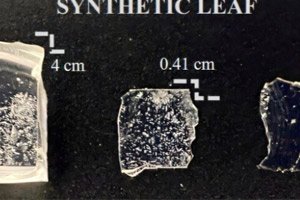
All iLive content is medically reviewed or fact checked to ensure as much factual accuracy as possible.
We have strict sourcing guidelines and only link to reputable media sites, academic research institutions and, whenever possible, medically peer reviewed studies. Note that the numbers in parentheses ([1], [2], etc.) are clickable links to these studies.
If you feel that any of our content is inaccurate, out-of-date, or otherwise questionable, please select it and press Ctrl + Enter.
Microscopic plant stones can cause irreversible damage to tooth enamel
Last reviewed: 15.07.2025

Tooth enamel, the hardest substance in the human body, may be at risk of gradual and irreversible wear from chewing vegetables.
While plant foods are an important part of a healthy diet because they provide fiber, vitamins and minerals, an international team of researchers has found that microscopic plant stones known as phytoliths may contribute to tooth wear over time, potentially leading to more frequent visits to the dentist.
They developed artificial leaves embedded with these microscopic particles and mounted them on a device that simulates the pressure and sliding motion of chewing on tooth enamel samples provided by local scientists.
According to the results of the experiment, published in the Journal of the Royal Society Interface, even soft plant tissues caused permanent damage to the enamel and loss of minerals when interacting with the enamel.
It is quite common for archaeologists to find fossilized remains of teeth, as they remain very well preserved due to their incredible hardness and strength, which can surpass the best modern engineering materials.
Tooth enamel is strong but also brittle, making it vulnerable to mechanical degradation from cracks, which occur suddenly when the force of a bite causes microcracks to spread, and wear, the slow loss of material over many years.
Scientists have conducted extensive research into how human tooth enamel breaks and wears down, what causes the damage, and how much force it takes to cause cracks. However, one area that is still poorly understood is the effect of microparticles from external sources, such as dust or food, on enamel.
Phytoliths are microscopic silica particles that form in the tissues of many plants when roots take up soluble silica from the soil and the vascular system deposits it in other parts of the plant.
Previous studies have looked at enamel wear caused by plant phytoliths, but the results have often been inconsistent. Moreover, these studies have failed to realistically model how the numerous phytoliths embedded in soft plant tissue interact with tooth enamel during chewing.
In this study, the researchers created artificial leaves from a polydimethylsiloxane (PDMS) matrix embedded with opaline phytoliths derived from wheat stems and leaves.
The resulting sheet, similar in thickness and rigidity to the real thing, was then mounted on a holder and repeatedly contacted with samples of healthy human wisdom teeth collected from dentists to simulate the sliding and pressure of chewing.
Physical and chemical changes in leaf and tooth enamel were analyzed using high-resolution microscopy and spectroscopic techniques.
Scientists have found that although the phytoliths themselves break down after repeated exposure, they still worsen existing wear on tooth enamel and reduce its mineral content.
An unexpected result was that the underlying wear mechanism was found to be quasi-plastic or permanent deformation arising from weakness in the microscopic structure of the enamel, rather than classic brittle fracture.
The researchers believe that the new data on enamel degradation could help scientists better understand the diet, behavior, movements and habitats of animals, acting as an interdisciplinary bridge between the physical and biological sciences.
